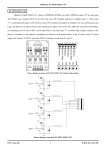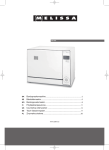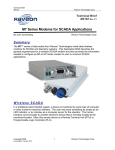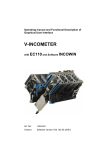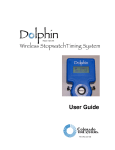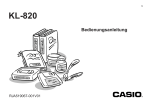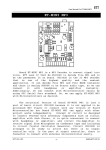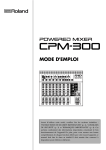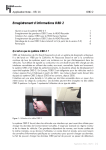Download Manual
Transcript
HighQSoft AoDoc GUI Version 1.4 User Manual Martin Kreyling 08.03.2005 Contents 1 Introduction 1 1.1 Introduction of AoDoc . . . . . . . . . . . . . . . . . . . . . . . . . . . . . . . . . . 1 1.2 Introduction to AoDocGui . . . . . . . . . . . . . . . . . . . . . . . . . . . . . . . . 1 2 The AoDoc 3 2.1 Using Aodoc . . . . . . . . . . . . . . . . . . . . . . . . . . . . . . . . . . . . . . . 3 2.2 The Proofer . . . . . . . . . . . . . . . . . . . . . . . . . . . . . . . . . . . . . . . . 5 2.3 The logging le . . . . . . . . . . . . . . . . . . . . . . . . . . . . . . . . . . . . . . 5 2.4 AoDoc.java . . . . . . . . . . . . . . . . . . . . . . . . . . . . . . . . . . . . . . . . 6 2.5 How to comment atf/xml les correctly. . . . . . . . . . . . . . . . . . . . . . . . . 6 3 Using the GUI 11 3.1 Congure the settings . . . . . . . . . . . . . . . . . . . . . . . . . . . . . . . . . . 11 3.2 The functions of AoDocGUI . . . . . . . . . . . . . . . . . . . . . . . . . . . . . . . 13 3.3 The system output . . . . . . . . . . . . . . . . . . . . . . . . . . . . . . . . . . . . 14 3.4 Starting the AoDocGUI.java . . . . . . . . . . . . . . . . . . . . . . . . . . . . . . . 15 4 Document Historie 17 Chapter 1 Introduction 1.1 Introduction of AoDoc AoDoc is a tool for reading, checking, completing, correcting and documenting Asam Transport Format (ATF) les. AoDoc can read both, ATF/XML and ATF/Classic les. It is designed to nd errors in ATF les via so-called proofers. AoDoc already contains some proofers, e.g. for required attributes or for relation checking. It can be enhanced by any kind of proofer. AoDoc can be used in a batch mode as well as in an interactive mode (aodocgui). This utility has not yet been integrated as a plugin into the AsamCommander. A given le is compared against a specied ASAM ODS Base Model (ao_baseXXX.htm) and automatically completed and corrected into a separately specied output le. The supported ASAM ODS Base Model le is dened in an extended HTML le containing some special tags to allow the coding of the ASAM ODS rules. This le is available in dierent versions which reect the versions of the ASAM ODS standard (e.g. 5.1 = athos/etc/ao_base51.htm). This le is maintained by HighQSoft according to the latest results of the ASAM ODS standard decisions and it is used as the backbone base model denition for the Athos software. The standard ASAM ODS Base Model Denition in Step-Express notation and the ASAM ODS XML Base Schema le are not yet evaluated by AoDoc. Output les can be ATF/XML, ATF/Classic and Doxygen documentation les to be used in a further typesetting process. There are three dierent checker modules, so-called 'proofers', to verify if an ASAM ODS Application Model contains all the required information. The ASAM ODS Application Model is automatically extended with required information from the ASAM ODS Base Model. The result model can be stored in a specied ATF/XML, ATF/Classic od Doxygen le. 1.2 Introduction to AoDocGui AoDoc GUI is a graphical user interface, which should simplify the usage of the AoDoc program. It allows to generate a cong le for the AoDoc and/or it executes the AoDoc program. 2 Introduction Figure 1.1: An overview on the progam © AoDoc GUI 08.03.2005 HighQSoft Version 1.4 Martin Kreyling Chapter 2 The AoDoc 2.1 Using Aodoc Aodoc can be installed to any directory. It is recommend to add the '../aodoc/' directory to the system-path to make the usage more comfortable. 2.1.1 The cong le The cong le contains all input data for the Aodoc tool. This is the point where you choose your input atf/xml les and other required information. An example of the default cong.dat looks like this (without line numbers): (01) (02) (03) (04) (05) (06) (07) (08) (09) (10) (11) (12) (13) ATF_XML_FILE = c:/tools/aodoc/input_files/base.xml ATF_XML_FILE = c:/tools/aodoc/input_files/demo.atf ATF_XML_FILE = c:/tools/aodoc/input_files/combustionmodel.atf AO_BASE_FILE = C:/tools/aodoc/src/java/com/highqsoft/aodoc/ao_base50_ralf.htm //possible proofer are: 'SIMPLE_PROOFER', 'REQUIRED_PROOFER' and 'RELATION_PROOFER' PROOFER = REQUIRED_PROOFER, RELATION_PROOFER //possible outputs are: xmlout, atfout, doxout OUTPUT = xmlout, atfout, doxout OUTPUT_DIR = c:/tools/aodoc/output/ All input les have to be declared with 'ATF_XML_FILE = ..' (line 1-3). The user may choose multiple les in dierent directories. The path name has to be absolut. Line (5) declares where Aodoc takes the AoBase.html from. Please note that not every AoBase.htm will work with this programm. A working version is delivered within the source directory of Aodoc. The dierence to former base les is, that a new tag ao_description was added to parse the description of the elements more easily. If using another version, all descriptions will be missing. 4 The AoDoc Line (8) declares which proofer Aodoc will use to merge the AoBase le with the atf/xml le. The three choices are: 'SIMPLE_PROOFER', 'REQUIRED_PROOFER' and 'RELATION_PROOFER'. Each proofer may be used as a stand-alone, but can also be used in combination with the other two proofers. The proofer need to be seperated with a ', '. The order of execution will always be: 'SIMPLE_PROOFER' -> 'REQUIRED_PROOFER' -> 'RELATION_PROOFER'. In line (11) the output mode is selected. Allowed values are 'xmlout', 'atfout' and 'doxout'. All modes can be in combination with each other, but have to be seperated with ', '. Line (12) declares the output directory, where all outputles will be saved. Note: A line can be commented with '//' and with '\'. 2.1.2 What would Aodoc produce with the example Cong.dat? Aodoc parses the three input les and compares them with the given AoBase le using the selected proofers. Since all three output modes are selected the output directory will contain nine les: base.atf base.dox base.xml demo.atf demo.dox demo.xml combustionmodel.atf combustionmodel.dox combustionmodel.xml As you can see the lename from the input le will be taken over. 2.1.3 Starting Aodoc Aodoc can be started with the Aodoc.bat le. It simply uses the Cong.dat which is in the same directory. Since you might have dierent cong les for dierent projects in dierent directories, just start the console, go to the desired directory and type in 'aodoc'. Aodoc will now take the 'Cong.dat' out of the actual diretory. The aodoc directory must therefor be set in the system path. The cong le is of course allowed to have a dierent name and also the path might be absolut. This will also work: The position of the log le can be changed with a second argument. aodoc example.dat aodoc c:/projekt/projekt_a/test.dat aodoc temp/test.dat The console also allowes 'backslash' instead of 'slash'. © AoDoc GUI 08.03.2005 HighQSoft Version 1.4 Martin Kreyling 2.2 The Proofer 5 2.2 The Proofer As explained above there are three dierent proofers which can be used. The choise is between 'SIMPLE_PROOFER', 'REQUIRED_PROOFER' and 'RELATION_PROOFER'. Every possible combination of the proofers is possible. The SIMPLE_PROOFER is more likely a merger of the atf/xml and the AoBase le. It compares all application elements and application attributes found in the atf/xml le with the matching element/attribute of the AoBase le. All the attributes of the matching AoElement/AoAttribute will be copied the the atf/xml le element/attribute if they are missing. As a result the user will have the original atf/xml extended with all available information from the AoBase le. As an example: If an application element has no description, it will be extended with the one from the AoBase le. If a description is avialable, nothing will be done. checks if application/relation attribute has a description The REQUIRED_PROOFER checks the atf/xml le for all required attributes and relations: if a required attribute is missing, it will be added with a default name, which has to be changed by user. checks if required 'or' relations are available only once. If such a relations does not occur, or occurs multiple times, the user has to make the change if a required 'non-or' relation is missing, Aodoc adds it with default 'name' and default 'ref-to'. all attributes and relations are checked for double occurances The RELATION_PROOFER proofs all the relation targets: checks if base relation is available (not required) checks if target application element is available (name and basetype need to be correct) No matter which combination of the proofers a user chooses. It will always be called the way they are ordered above. This can be changed in the Aodoc.java itself, or Aodoc can be executed multiple times with only one proofer. Note: It is also possible to choose no proofer. This is useful, if the user just wants to convert atf/xml les to another le. It is possible to create the doxygen out but from atf/xml and it is prossible to convert a complete xml le to atf. Converting atf to xml also works, but the user has to add some tags to the xml header the base model version. This information is not required in a atf le, and therefore has to be added manually. To convert les it is recommened to use the SIMPLE_PROOFER. In most of the cases just the description for each element/attribute is added. 2.3 The logging le The logging output of aodoc will normaly be saved in a temp dir'/AodocLogging.htm'. If an URL is given by the second argument, the le only will be stored in the given URL. The logging le contains all warnings of the proofers when they detect missing object or a wrong relation in the atf/xml le. All these occurances are registered with some extra information so that © AoDoc GUI 08.03.2005 HighQSoft Version 1.4 Martin Kreyling 6 The AoDoc it becomes quite easy for the user to correct the atf/xml le. For example AoDoc adds missing relations, but they still have to be renamed by the user (target element name). Since there is no GUI yet, this is the only way to do it. The displayed warnings do not necessarily cause the ASAM Commander to display a wrong tree if you load the original atf/xml le. If there are no red warnings you atf/xml le is complete. The warnings displayed green just inform the user that the specied relation has no base relation which is totally conform with the base model. More such (green) warnings may be added, but there is no need to work on it. The SIMPLE_PROOFER throws purple info-warnings, when there is no description for an application/relation attribute. These attributes wheter are not part of the base model, or the base model does not contain a description for the object. There are some other information included to the logle which are most likely self-explaining. 2.4 AoDoc.java This section will describe a few things the user can change in the AoDoc.java to test single steps of the programm. First of all the user should roughly understand how the programm works: The whole AoDoc consist of three main procedure. First of all the input les are parsed with the specied parses. The parser aoutamatically build a DOM out of the le. No matter what le it was, they all look the same in the DOM. Then the atf/xml DOM is taken to be compared with the AoBase DOM with the rules of one of the proofers. The third task is to print the output via one of the printers. 2.4.1 The logger The logger can be switched o or be set to another level. logger.setLevel(Level.FINEST); To turn the logger of select 'Level.OFF'. To just printout the warning lines it can also be changed to 'Level.WARNING'. For further explaination, see the java documentation. 2.5 How to comment atf/xml les correctly. The ATF Classic le syntax allows block comments of the type /* ... */ and single line comments of the type // ... . Those comments may appear anywhere within the code, but they are ignored in string denitions of the type " ... " © AoDoc GUI 08.03.2005 HighQSoft Version 1.4 Martin Kreyling 2.5 How to comment atf/xml les correctly. 7 The AoDoc parser adds a few additional rules which allow to distinguish certain types of comments without the need to mark those comments with special tags. The rules have been dened in a way that most les can be processed without major modications. Rule 1: AoDoc ignores the block comments within slash-star comment signs completely. Slash-star block comments do not appear in the documentation of an ATF le. Rule 2: Single line comments starting with // are used as valid ATF le documentation for further processing. Rule 3: Continuous single line comments are treated as a block comment unless they appear behind APPLELEM or APPLATTR keywords on the same line. This means, as long as no empty line or a line without a comment is detected, each additional single line comment is added to the block comment. 2.5.1 The ATF comments. Comments are interpreted by their position. AoDoc recognizes the following patterns. Each comment block may have as many lines as desired. For simplicity each block is shown here in a few lines per block only. // Document title // If there are only two or less comment blocks available, this comment block is assumed to be missing. // Document Synopsis // This is a short desription or abstract of the document. // If there are only three or less comment blocks available, this comment block is assumed to be missing. // Document Description // This is the full and probably lengthy description of the document. // Application Element Synopsis // This is a short desription or abstract of the following application element. // If there are only four or less comment blocks available, this comment block is assumed to be missing. // Application Element Description // This is the full and probably lengthy description of the following APPLELEM Environment, BASETYPE AoEnvironment APPLATTR Id, BASEATTR id, DATATYPE DT_LONGLONG; // APPLATTR Name, BASEATTR name, DATATYPE DT_STRING; // APPLATTR Description, BASEATTR description, DATATYPE DT_STRING; // APPLATTR myAttr, DATATYPE DT_STRING; // ENDAPPLELEM application element. The The The And Id comment (optional). Name comment (optional). Description comment (optional). so on... // Application Element Synopsis // This is a short desription or abstract of the following application element. // Application Element Description // This is the full and probably lengthy description of the following APPLELEM Test, BASETYPE AoTest APPLATTR Id, BASEATTR id, DATATYPE DT_LONGLONG; // APPLATTR Name, BASEATTR name, DATATYPE DT_STRING; // APPLATTR Description, BASEATTR description, DATATYPE DT_STRING; // APPLATTR myAttr, DATATYPE DT_STRING; // ENDAPPLELEM /* © AoDoc GUI 08.03.2005 HighQSoft Version 1.4 Martin Kreyling application element. The The The And Id comment (optional). Name comment (optional). Description comment (optional). so on... 8 The AoDoc Created Thu Jun 30 11:31:26 2005 This is some atf-file description or history information that should not show up in the final documentation. */ // // // // // // // // // This is the general description of the ATF file which is used in the documenation. The comment signs are removed for documentation purposes Empty lines as the line above this one are used to introduce a new paragraph in the documentation There may be any number of paragraphs as long as the single line comment sign is available on every line. // By the way, this line overwrites the single line comment block from // above, because we started a new one. This is only allowed for application // element descriptions.................................... ATF_FILE V1.4; // APPLE Kommentar1 // APPLE Kommentar2 /* APPLE Kommentar3 */ APPLELEM Environment, BASETYPE AoEnvironment // APPLE Kommentar4 APPLATTR EID, BASEATTR id, DATATYPE DT_LONGLONG; // APPLA Kommentar1 // APPLA Kommentar2 // APPLA Kommentar3 APPLATTR Description, BASEATTR description, DATATYPE DT_STRING; // APPLA Kommentar4 APPLATTR Name, BASEATTR name, DATATYPE DT_STRING; // APPLA Kommentar4 ENDAPPLELEM; It is allowed to write comments on top of every le, element and attribute. It is also allowed to write the comments behind an element or attribute until the end of line (10, 15). Comment chars are /* ... */ and ' // . It does not work using slash star comments in itselfs /* ... /* ... */ .. */ . The following output will be (using no proofer or SIMPLE_PROOFER): (01) (02) (03) (04) (05) (06) (07) (08) (09) (10) (11) /* Created Tue Mar 27 11:31:26 2001 this is the atf-file description */ ATF_FILE V1.4; /* APPLE Kommentar1 APPLE Kommentar2 APPLE Kommentar3 APPLE Kommentar4 © AoDoc GUI 08.03.2005 HighQSoft Version 1.4 Martin Kreyling 2.5 How to comment atf/xml les correctly. (12) (13) (14) (15) (16) (17) (18) (19) (20) (21) (22) (23) (24) (25) 9 */ APPLELEM Environment, BASETYPE AoEnvironment APPLATTR EID, BASEATTR id, DATATYPE DT_LONGLONG; /* APPLA Kommentar1 APPLA Kommentar2 APPLA Kommentar3 APPLA Kommentar4 */ APPLATTR Description, BASEATTR description, DATATYPE DT_STRING; /* APPLA Kommentar4 */ APPLATTR Name, BASEATTR name, DATATYPE DT_STRING; ENDAPPLELEM; ATF_END; 2.5.2 The XML Comments There is onyl ony way to comment xml les. The comment has to be above the start-tag of the element/attribute. An example le is listed here: (01)<!-(02) Created Tue Mar 27 11:31:26 2001 (03) by user karst on host ODIN with program ASCOBA. (04)--> (05)<atfx_file version="atfx_file V1.4"> (06) (07)<!-(08)Locale of Document (09)--> (10) <locale>de_DE (11) </locale> (12) (13)<!-(14) Based on ODS Base Model version (15)--> (16) <base_model_version>27 (17) </base_model_version> (18) (19)<!-(20) declare application model meta data (21)--> (22) <application_model> (23) (24)<!-(25) APPLE Kommentar1 (26) APPLE Kommentar2 (27)--> (28) <application_element> (29) <name>Environment</name> (30) <basetype>AoEnvironment</basetype> (31)<!-(32) Unique ID for the instances of an application element (33)--> (34) <application_attribute> (35) <name>EID</name> (36) <base_attribute>id</base_attribute> (37) <datatype>DT_LONGLONG</datatype> (38) </application_attribute> (39) </application_element> This example will not be discussed, because it should be clear how it works. © AoDoc GUI 08.03.2005 HighQSoft Version 1.4 Martin Kreyling 10 The AoDoc © AoDoc GUI 08.03.2005 HighQSoft Version 1.4 Martin Kreyling Chapter 3 Using the GUI 3.1 Congure the settings 3.1.1 The ASAM ODS Base le First of all the absolut path of the AO Base should be set. There for it can be entered into the texteld or it can be choosen by using the browser button and the lechooser. Here only one le will be given to the program. If you don't give a location of an AoBase the AoDoc a standart location. Which is "ATHOS_ROOT".htm, either give the path of a AoBase or make sure that this one is existing. This is the standart of AoDoc. Figure 3.1: Select the location of an AoBas 3.1.2 The ATF or XML input les Now the les, which have to be checked, must be selected. Here it is only posible to use the lechooser which will open after pressing the button. In this lechooser it is posible to selecte multiple les by using the "Shift" or the "Ctrg" button. The "Clear" button resets the textarea. Figure 3.2: Select the locations of the input les 12 Using the GUI Figure 3.3: Multiple les selected 3.1.3 The Proofer Option Now the Proofer will be selected. The Proofers are described in the AoDoc documentation. For more information about the Proofers (p. 5) Figure 3.4: Un/check the proofer you need or not All combinations are posible. If no Proofer is selected the input le will only be converted, but the SIMPLE PROOFER is a better way to convert the les. 3.1.4 Output format The posible output formats are XML, ATF and DOX. The user can combine the dierent output formats as he likes, but there must be at least one format selected. Figure 3.5: Un/check the format you want © AoDoc GUI 08.03.2005 HighQSoft Version 1.4 Martin Kreyling 3.2 The functions of AoDocGUI 13 3.1.5 Output directory Here the user has to select where the les which will be created during the AoDoc is running will be stored. The destination can be entered or be selected through the lechooser. The lechooser only accepts directorys! 3.1.6 Cong le destination Here the user has to give the destination of the cong le. The destination is used for three things: for the creation of the cong le for loading a cong le for the execution of the AoDoc program Figure 3.6: The output and cong settings 3.2 The functions of AoDocGUI Figure 3.7: The buttons which make the most important actions 3.2.1 Generate cong button If the "Generate cong" button is pressed, some essental conditions are checked, befor the cong le is writen : is there at least one input le is the destination of the cong le set is an AoBase path given is there at least one output format chosen If all conditions are fullled, a procedure produces the cong le and it creates it if necessary. The apprence of the cong le itself is described in the AoDoc documentation. © AoDoc GUI 08.03.2005 HighQSoft Version 1.4 Martin Kreyling 14 Using the GUI 3.2.2 Load cong dutton If the "Load cong" button is pressed, the destination of the cong le is taken and the le is loaded. Then the option spezied in there will be read and displayed on the GUI. 3.2.3 Execute AoDoc button If the "Execute AoDoc" button is pressed, the destination of the cong le is taken and starts the AoDoc program as a thread, so you can work on. When the AoDoc nishes a new Window comes up and the result is shown in an HTML le which can be saved. IMPORTANT: The GUI only gives the location of the cong le to the AoDoc not the values which are selected on the GUI itself! That means rst make a cong le or get the location of an exsiting cong le, and the execute! Figure 3.8: Here is result shown Note: The le shown is only a temp le it will be deleted after closing the window. 3.2.4 Exit button This button stops the hole program. The thread for of the execution of AoDoc will be stop, too. If the AoDoc is running don't close the main frame or every thing will be stop. That can lead to problems because of some le operations that are running. 3.3 The system output The normal console output is all shown in the textarea instead of in the console. Figure 3.9: The system output © AoDoc GUI 08.03.2005 HighQSoft Version 1.4 Martin Kreyling 3.4 Starting the AoDocGUI.java 3.4 Starting the AoDocGUI.java The AoDocGUI is the main program. The GUI doesn't take any paramenters, when called. The AoDocGui needs: CONFIG_FILE_Maker.java HTMLFilter.java ATF_XMLFilter.java EXEThread.java LOGStream.java © AoDoc GUI 08.03.2005 HighQSoft Version 1.4 Martin Kreyling 15 16 Using the GUI © AoDoc GUI 08.03.2005 HighQSoft Version 1.4 Martin Kreyling Chapter 4 Document Historie Date Description Author March 1st 2005 March 2st 2005 basic version AoDoc and AoDocGUI manual joint Martin Kreyling Martin Kreyling





















